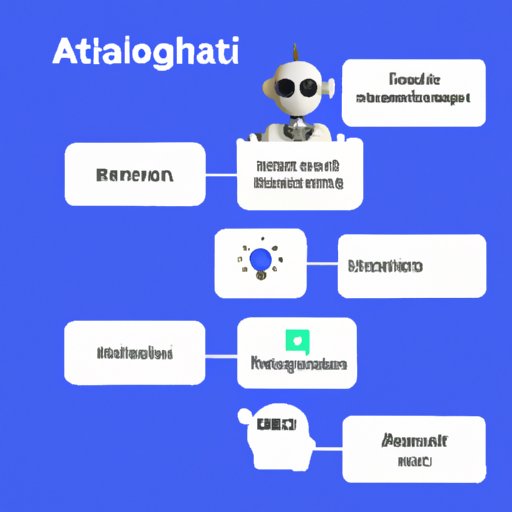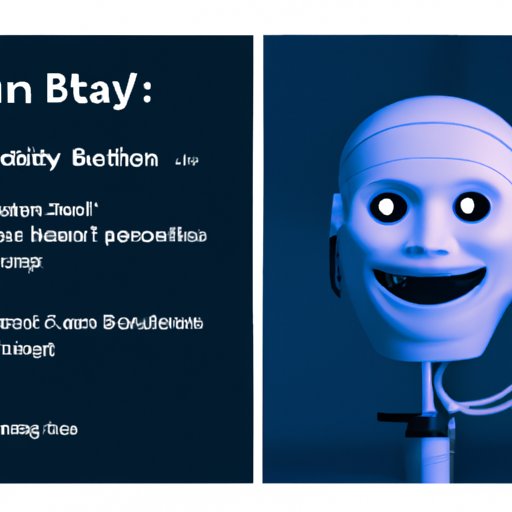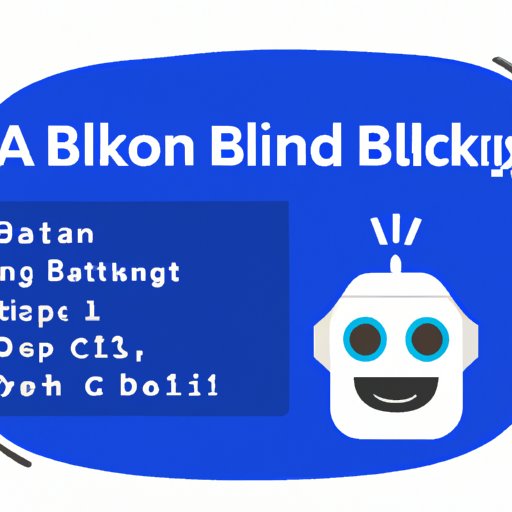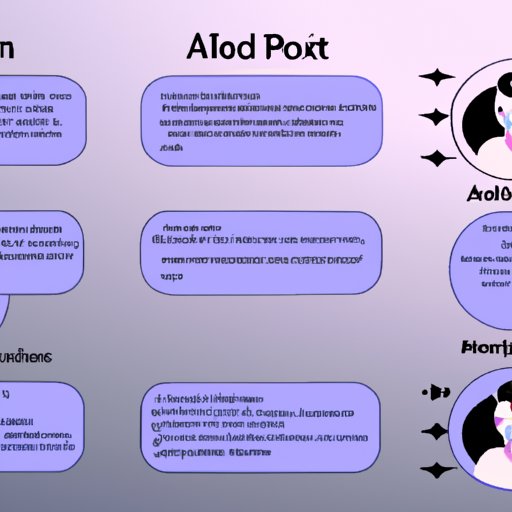Introduction
With the rise of artificial intelligence (AI) technology, chatbots have become increasingly popular. AI chatbots are computer programs that use natural language processing (NLP) and machine learning algorithms to understand user input and respond accordingly. Developing an AI chatbot in Python is a great way to quickly create an interactive program with advanced features. This article will provide an overview of what is involved in making an AI chatbot in Python, from understanding the basics of AI chatbot development to exploring real-world examples and offering tips on writing code for an AI chatbot.

Definition of AI Chatbot Development
AI chatbot development is essentially the process of creating computer programs that can understand human language and interact with users in a meaningful way. AI chatbot development typically involves using natural language processing (NLP) and machine learning algorithms to enable a chatbot to interpret user input and generate appropriate responses. In addition, AI chatbot development often also involves designing a conversational interface for the chatbot as well as integrating the chatbot into various applications.

Overview of Benefits of Developing an AI Chatbot in Python
Python is a popular programming language for developing AI chatbots due to its simplicity and flexibility. It has numerous libraries and frameworks available for implementing different AI-related tasks, such as natural language processing and machine learning. Furthermore, Python is relatively easy to learn, which makes it ideal for those new to programming or AI chatbot development. Additionally, Python is open source, meaning it is free to use and there is a large community of developers providing support and resources.

The Basics of AI Chatbot Development in Python
Before you can begin developing an AI chatbot in Python, you need to understand the components of AI chatbot development. The most important components include natural language processing (NLP), machine learning algorithms, and a conversational interface. NLP is used to interpret user input and generate an appropriate response. Machine learning algorithms are used to enable the chatbot to learn from user input and adapt its responses accordingly. Finally, a conversational interface is used to design how the chatbot interacts with users.
Explain the Components of AI Chatbot Development
Natural language processing (NLP) is the process of analyzing text or speech and extracting meaningful information from it. NLP is used by AI chatbots to interpret user input and generate an appropriate response. Machine learning algorithms are used to enable the chatbot to learn from user input and adapt its responses accordingly. Finally, a conversational interface is used to design how the chatbot interacts with users. This includes designing the conversation flow, setting up the chatbot’s personality, and creating rules for how the chatbot should respond to certain inputs.
Demonstrate How to Set Up the Basic Structure of a Chatbot Using Python
Once you have a basic understanding of the components of AI chatbot development, you can begin to set up the basic structure of a chatbot using Python. To start, you will need to install the relevant Python libraries and frameworks. For example, you may want to install the Natural Language Toolkit (NLTK) library for natural language processing tasks, or the scikit-learn library for machine learning tasks. You will then create a class to define the chatbot’s behavior and write functions to handle user input and generate appropriate responses. Finally, you will set up a main loop to run the chatbot and take user input.
Examples of Real-World AI Chatbots Built with Python
Now that you have a basic understanding of AI chatbot development in Python, let’s look at some real-world examples of AI chatbots built with Python. AI chatbots can be used for a variety of purposes, from customer service to entertainment. Here are some examples of popular AI chatbots built with Python.
Showcase Different Types of AI Chatbots
One example is Microsoft’s XiaoIce, an AI chatbot designed for entertainment purposes. XiaoIce uses natural language processing and machine learning algorithms to understand user input and generate appropriate responses. It also has a conversational interface designed to mimic human conversation. Another example is Google’s Allo, an AI chatbot designed for customer service. Allo uses natural language processing to understand user input and generate an appropriate response. It also has a conversational interface designed to enable users to easily interact with the chatbot.
Highlight Examples of Popular AI Chatbots
The Amazon Alexa AI chatbot is another popular example. Alexa uses natural language processing and machine learning algorithms to understand user input and generate appropriate responses. It also has a conversational interface designed to enable users to easily interact with the chatbot. Additionally, Alexa is integrated with other Amazon services, such as shopping and music streaming. Finally, Apple’s Siri is one of the most popular AI chatbots. Siri uses natural language processing and machine learning algorithms to understand user input and generate appropriate responses. It also has a conversational interface designed to enable users to easily interact with the chatbot.
Tips for Writing Code for an AI Chatbot in Python
Writing code for an AI chatbot in Python can be challenging. Here are some tips to help make the process easier.
Outline Common Challenges Faced When Writing Code for an AI Chatbot
One of the biggest challenges faced when writing code for an AI chatbot is dealing with natural language ambiguity. Natural language is inherently ambiguous, meaning it can be interpreted in multiple ways. Therefore, it is important to ensure that your code can account for this ambiguity and generate appropriate responses. Additionally, it can be difficult to accurately identify user intent. This is especially true when dealing with complex queries or requests. To address this issue, it is important to have a comprehensive list of possible intents and use machine learning algorithms to accurately identify user intent.
Offer Solutions to Common Problems
When writing code for an AI chatbot, it is important to use efficient algorithms to ensure that the chatbot can process data quickly. Additionally, it is important to use good coding practices, such as using descriptive variable names, commenting code, and using meaningful error messages. Finally, it is important to test your code thoroughly to ensure that the chatbot is functioning correctly.
Discussion of Future Possibilities for AI Chatbot Development in Python
As AI technology continues to evolve, there are many possibilities for further advancements in AI chatbot development in Python. For example, researchers are currently exploring the potential for AI chatbots to be used in healthcare. According to a Harvard Business Review study, “AI-enabled chatbots have the potential to revolutionize patient care by providing 24/7 assistance, personalized advice, and automated follow-ups.” Additionally, AI chatbots could be used to improve customer service, automate mundane tasks, and more.
Explore the Potential for Further Advancements in AI Chatbot Development
As AI technology advances, AI chatbot development in Python is likely to become even more powerful. For example, researchers are exploring the potential for AI chatbots to be used in healthcare. Additionally, AI chatbots could be used to improve customer service, automate mundane tasks, and more. Furthermore, AI chatbots could be used to provide personalized advice and automated follow-ups. Finally, AI chatbots could be used to provide more accurate predictions and insights based on user data.
Highlight Areas Where AI Chatbots Can Improve
While AI chatbots have come a long way, there are still areas where they can improve. For example, AI chatbots still struggle with understanding natural language and accurately identifying user intent. Additionally, AI chatbots can sometimes generate non-sensical responses or fail to generate any response at all. Finally, AI chatbots can lack the ability to understand context and provide personalized advice. However, with continued research and development, these issues can be addressed.
Conclusion
In conclusion, developing an AI chatbot in Python is a great way to quickly create an interactive program with advanced features. This article provided an overview of what is involved in making an AI chatbot in Python, from understanding the basics of AI chatbot development to exploring real-world examples and offering tips on writing code for an AI chatbot. As AI technology continues to evolve, there are many possibilities for further advancements in AI chatbot development in Python. With continued research and development, AI chatbots can become even more powerful and can be used for a variety of purposes.
(Note: Is this article not meeting your expectations? Do you have knowledge or insights to share? Unlock new opportunities and expand your reach by joining our authors team. Click Registration to join us and share your expertise with our readers.)
